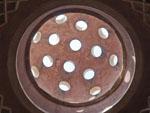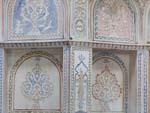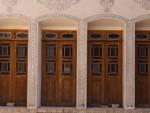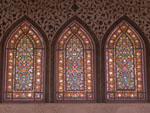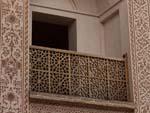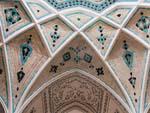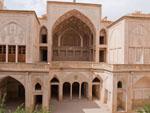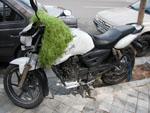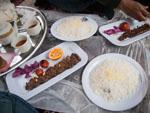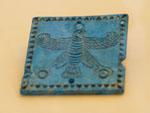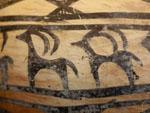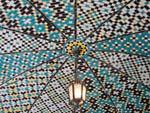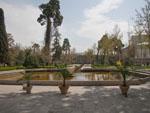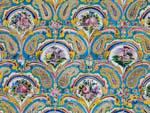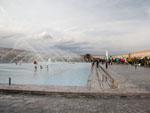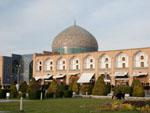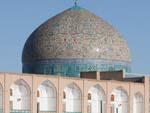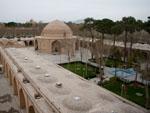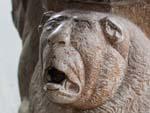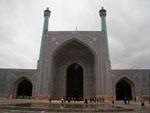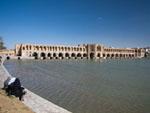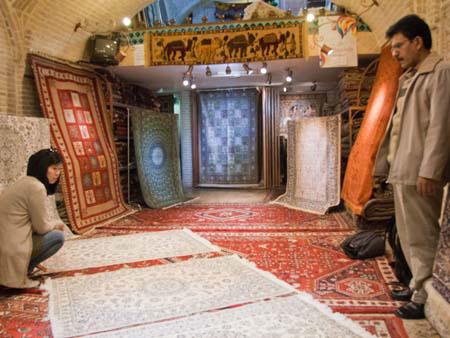After a week in Tehran waiting for visas and what-not, our hotel’s manager Mr Mousavi at Firouzeh Hotel suggested we head to Kashan for a break from the hustle and bustle of the city. We took his advice and headed on the two-and-a-half hour bus to Kashan, a city located approximately half way between Tehran and Esfahan.
thydzikgooglemap(http://sonyaandtravis.com/maps/iran-tehran-to-kashan.xml)
We arrived at the Noghii Traditional House, another recommendation by Mr Mousavi, around nine-o’clock in the evening. We were quite hungry as we hadn’t eaten dinner and decided to try the traditional food of Kashan – a variety of herbs and vegetables (spring onion, coriander, mint), pickles, a dish of meatballs and soup, and the traditional sour milk/yoghurt drink ‘doogh’.
The following morning we had a breakfast of fresh bread, tomato, cucumber and home-made carrot jam with hot tea. We met an older group of travellers who were all Iranian by birth, but had each moved to other countries including France and America. They had returned to Iran to visit friends and site-see.
Kashan is famous for its mansions and traditional houses, so we set off, visiting the four main mansions, a bathhouse and the old city walls. It was pleasant and relaxing walking through the streets of Kashan after Tehran, below are the sites we visited:
Khan-e Borujerdi (Boroujerdi Historical House)
A beautiful mansion, its frescoes painted by famous Iranian painter Kamal ol-Molk (we had seen his paintings in the Golestan Palace in Tehran). This mansion also has a six-sided domed badger (wind-tower).
Hammam-e Sultan Mir Ahmad (Soltan Amir Ahmad Historical Bath)
A beautiful hammam (bathhouse) built around four-hundred-and-fifty years ago. We walked into the impressive main area and thought that was it, but then realised there were a number of other bath rooms. We were allowed on the rooftop which enabled us a view of the domes of the hammam and the channel for water entry into the hammam.
Khan-e Yabatabei (Tabatabaei Historical House)
Owned by a carpet merchant this mansion is massive and covers 4,730 square metres which includes four massive courtyards.
Khan-e Ameriha (Ameriha Historical House)
Built during the late 18th century, this is a spectacular mansion owned by one of Kashan’s governors. This is the biggest of the mansions, we almost got lost looking through it. We searched a while but managed to find one of the two hammams (bathhouses) within the complex. Some of the complex is still undergoing restoration but what we saw was impressive.
Khan-e Abbasian (Abbasian Historical House)
My favourite of the mansions, this mansion was designed across a number of levels and contained a number of stunning courtyards, frescoes and rooms.
Old City Walls
Two friendly boys from Kashan led us to the Old City Walls (as we were heading in the wrong direction). We climbed the circular walls from the south east and realised that they were using the area within the walls for agriculture. On our way back we bought some refreshing faloodeh (a cold Persian dessert).
Kashan’s Historical Houses
- Khan-e Borujerdi (Boroujerdi Historical House)
- Hammam-e Sultan Mir Ahmad (Soltan Amir Ahmad Historical Bath)
- Khan-e Yabatabei (Tabatabaei Historical House)
- Khan-e Ameriha (Ameriha Historical House)
- Khan-e Abbasian (Abbasian Historical House)
thydzikgooglemap(http://sonyaandtravis.com/maps/iran-kashan-historical-houses.xml,s)





































































































